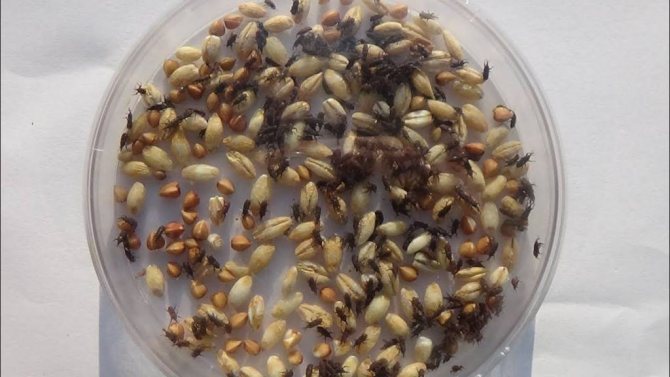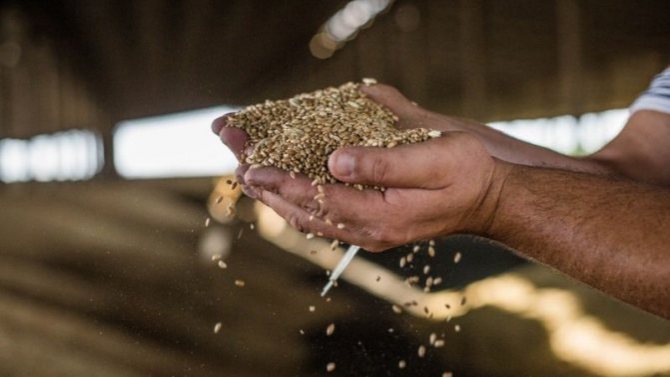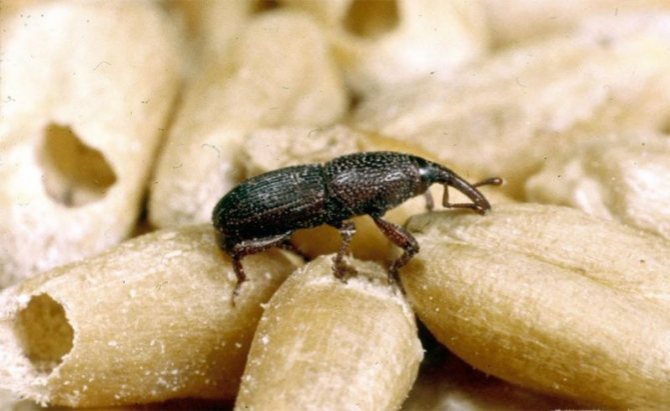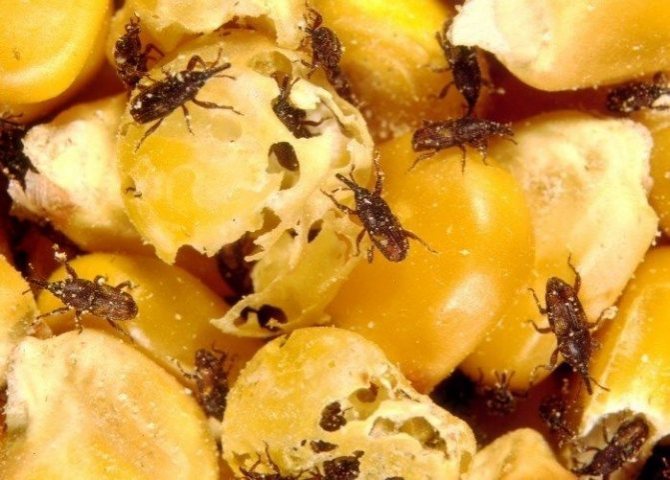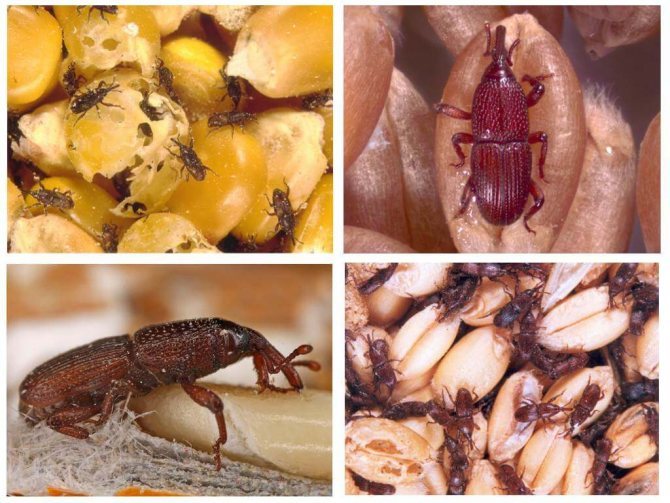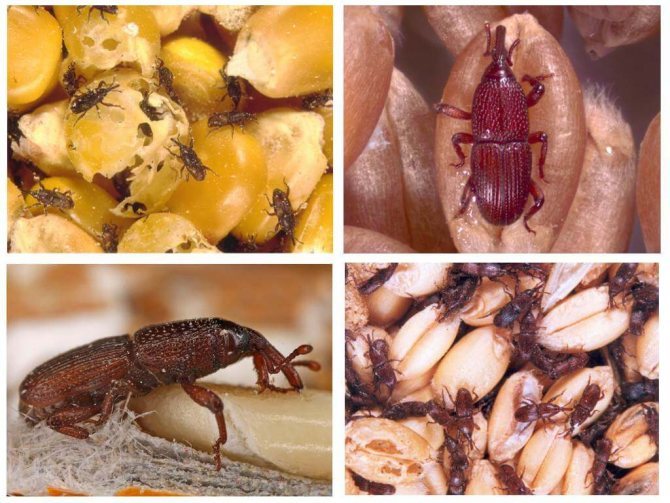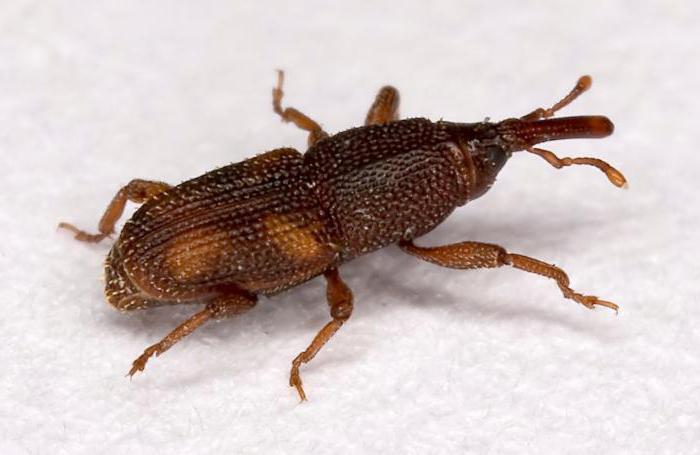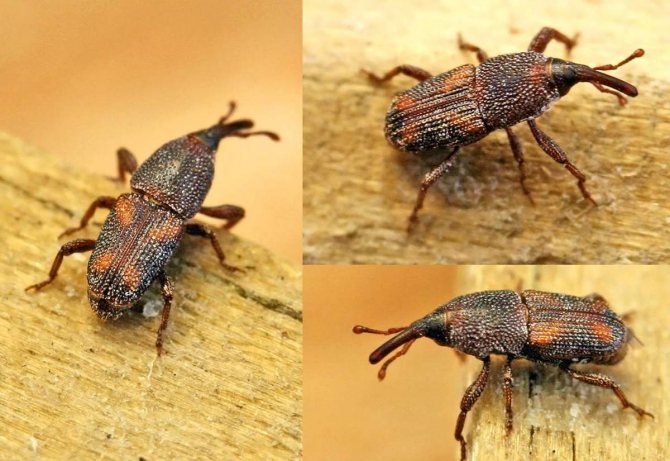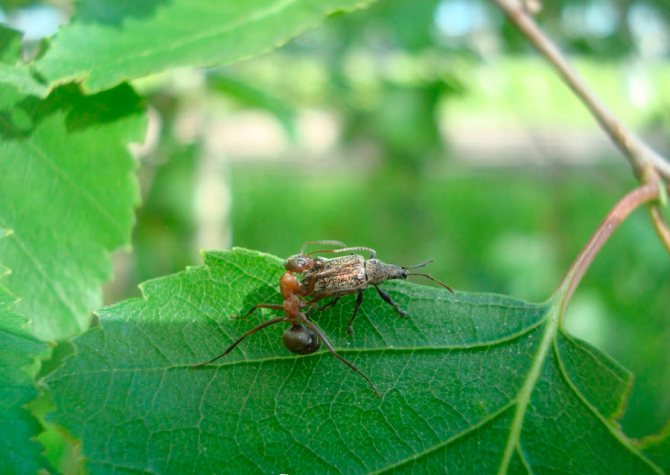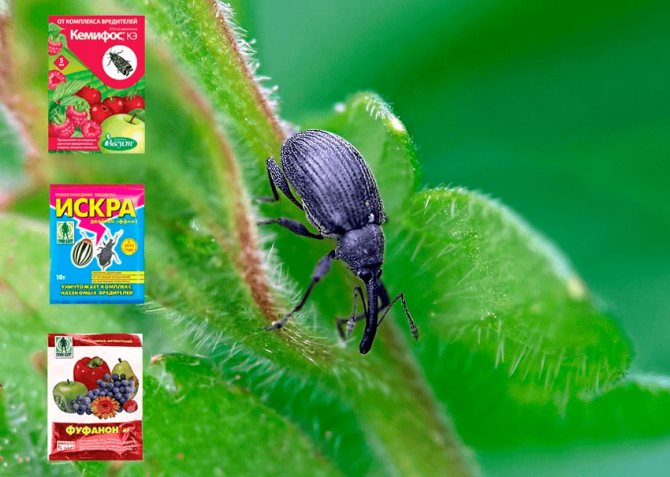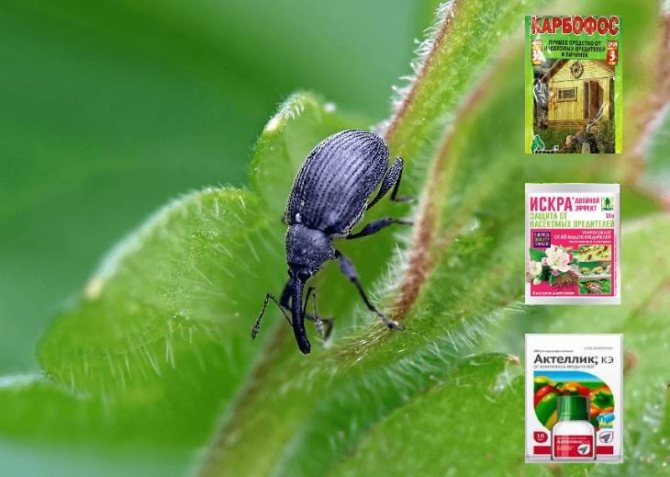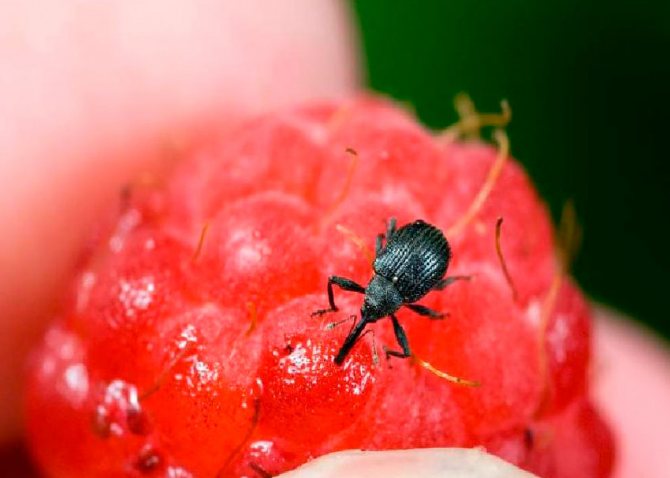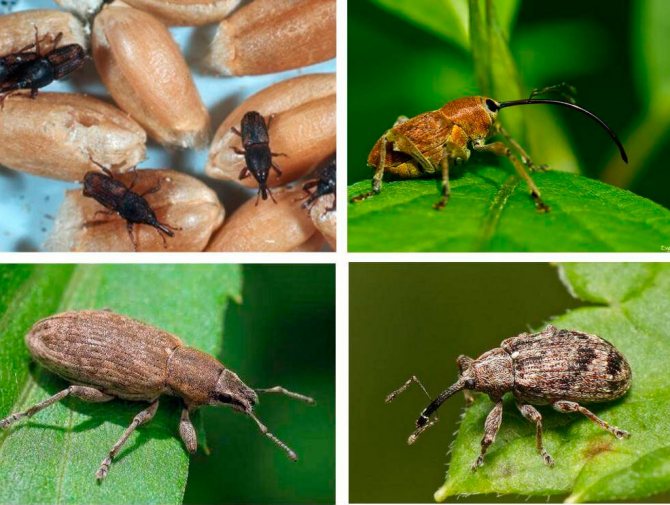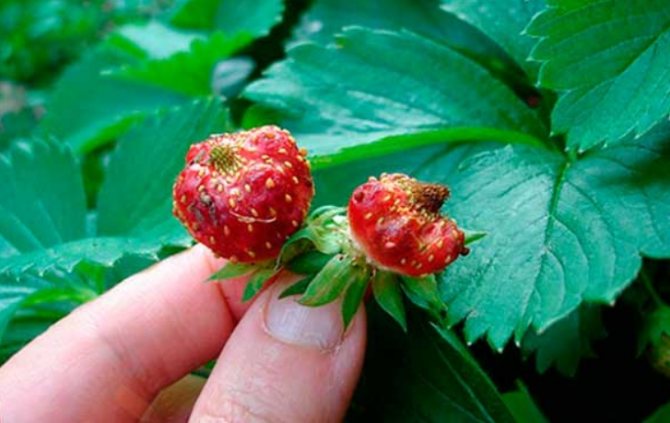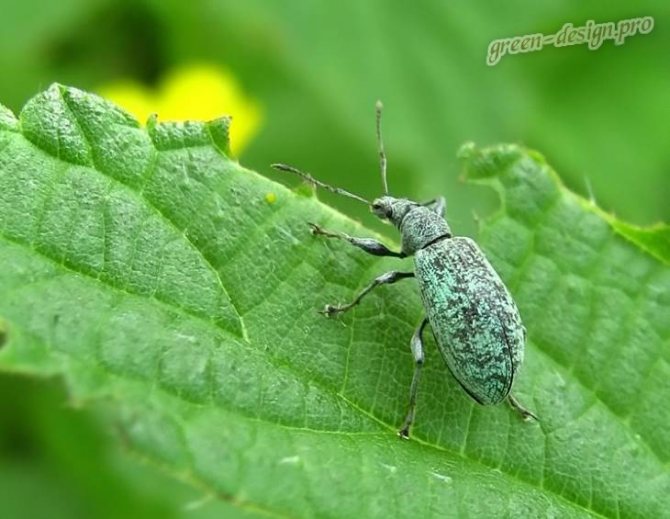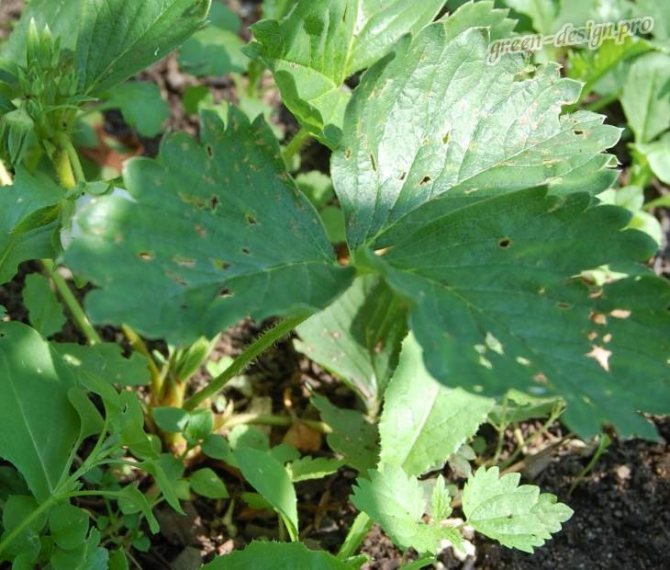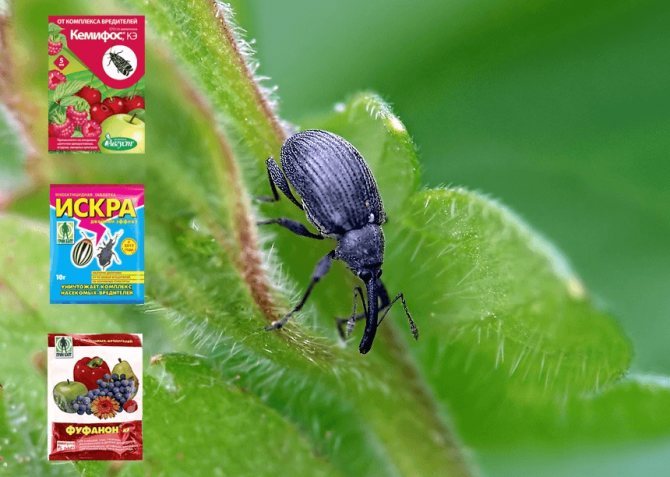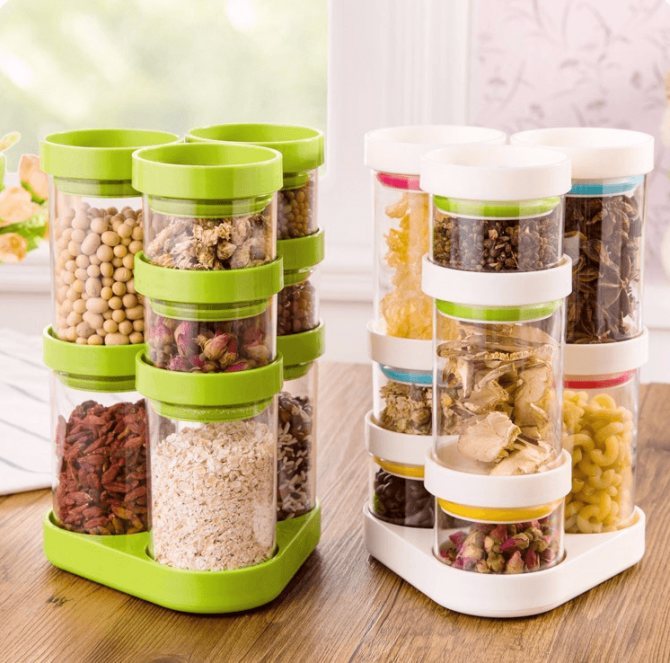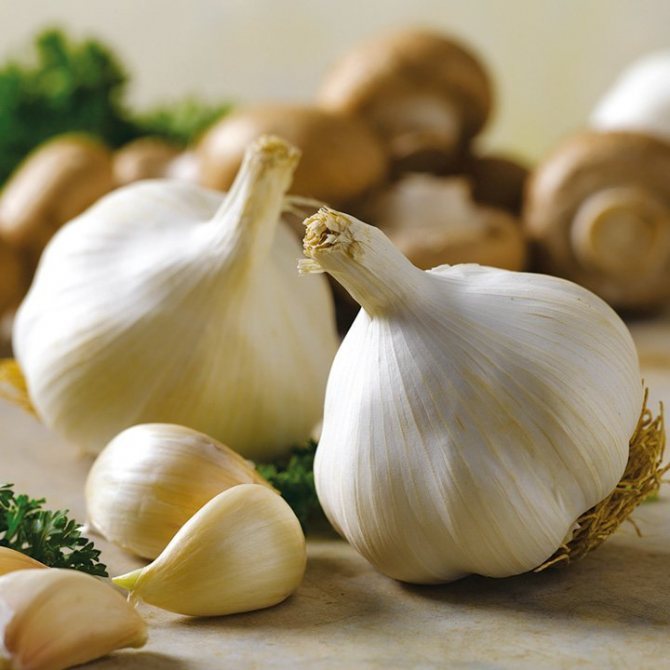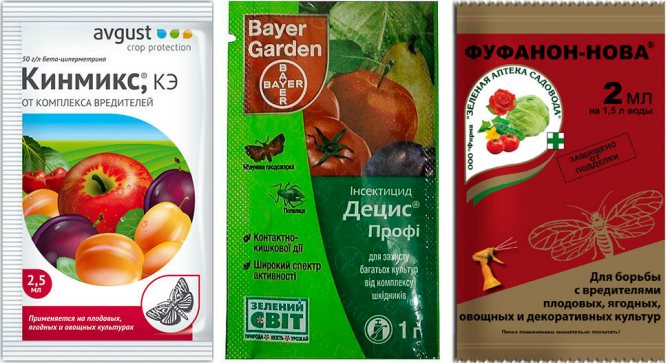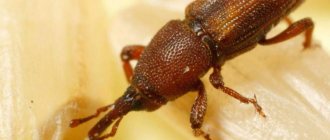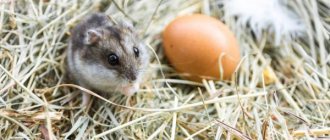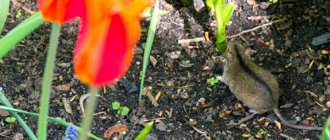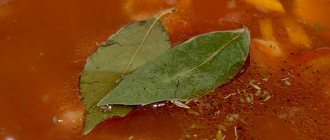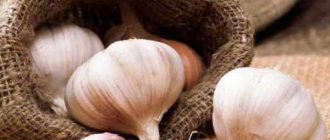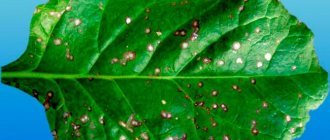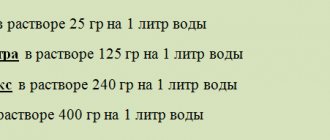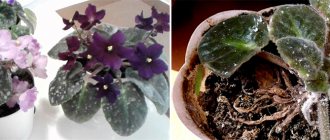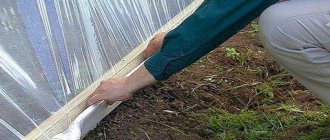Weevil is one of the most dangerous parasites for cereals, which include rice, oats, millet, buckwheat, rye, barley, wheat, buckwheat, as well as pasta and caked flour. These crops and products of their processing are the basis of the diet of this pest. Damaged supplies become unfit for food and in some cases can provoke poisoning. Plus, the grain that has been affected by the weevil acquires the ability to absorb moisture from the air and decays over time.
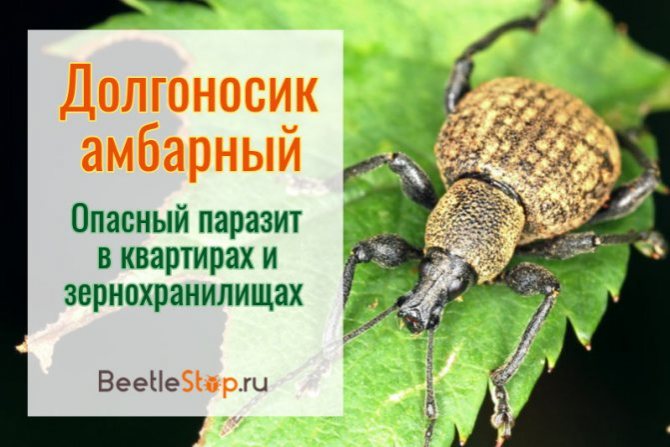
Description of the pest
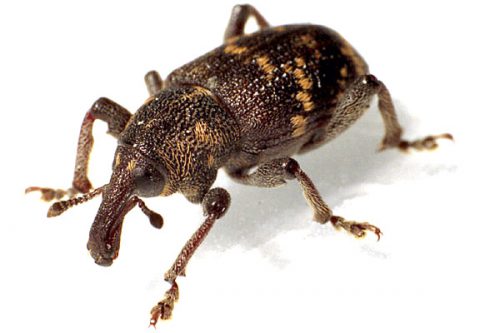

It is rather difficult to consider what a weevil looks like, because the size of an adult is 3.5 mm on average. At the initial stage of its development, it is colored light brown, but as it grows, it becomes very dark in color. And it got its name for a special elongated rostrum, which crowns its body, resembling a cylinder in shape. The weevil does not know how to fly, but it moves very quickly with the help of its legs.
A distinctive feature of this species are very powerful jaws, so weevils in an apartment or in a warehouse can easily break the integrity of the packaging material and get to food. For their comfortable existence, they need a temperature from 10 ° C to 25 ° C, humidity within 65%, as well as the moisture content of the products themselves (grain) about 15%.
The female gnaws "minks" in the grains and lays eggs there, from which larvae appear in two weeks. While developing, they eat up the grain from the inside and pupate. The hatched bug gnaws at the wall and turns out to be outside. It is because of this way of development that pests are very difficult to detect at an early stage. Adults are already becoming noticeable.
Prevention of the appearance of weevils
Weevils are dangerous pests of vegetables and grains. The ancient Egyptians fought with them several millennia ago. These beetles of the order Coleoptera have about 50,000 species. Adult insects reach 2-4 mm, have a dark brown color and a characteristic elongated front part of the head. Beetles have poorly developed wings that they cannot use.
The life span of insects ranges from 7 months to 2 years. A female insect can lay 2-3 clutches per year, each time 200-300 eggs per grain of cereal. Weevils live in the apartment, mainly of the following species:
- the granary is the most insatiable of its kind. Likes to settle in the kitchen and eat supplies of cereals and flour;
- rice - can start in buckwheat or rice cereals, does not disdain bakery products;
- nutty - chooses places for storing nuts for his dwelling;
- Dubovik - loves acorns, but if he settles in houses, he does not refuse those food supplies that he has;
- beet - can live in gardens, vegetable gardens, using vegetables and fruits for food.
Any housewife wants to have a stock of food on hand. But do not be too zealous, because no one is immune from the appearance of weevils. Therefore, making unnecessarily large purchases that will be stored for a long time in a warm cabinet or pantry is not worth it. The best option is to make purchases for a couple of months. The following precautions will eliminate the risk of weevils in the kitchen:
- purchased cereals can be sealed in a pact and left in the freezer for several days. If the provisions were inhabited by bugs, then the cold will simply destroy them;
- to prevent the appearance of weevils in the kitchen, you need to store cereals in tightly closed containers;
- regularly check the expiration date;
- immediately clean up spilled liquids, spilled crumbs;
- the inner space of the pantry should be wiped with soapy water from time to time. You can add a few drops of clove or eucalyptus oil to the water;
- in cabinets or pantries, you need to place bay leaves or garlic cloves;
- maintain proper storage conditions. This is a temperature of no more than 10 ° and a low level of humidity.
If there are children or animals at home, then it is highly undesirable to use strong chemicals in the fight against insects. What to do if weevils start in the apartment and how to get rid of them with folk remedies? There are a few steps you can take to get rid of the bugs harmlessly but effectively:
- After purchasing the products, they should be subjected to thermal treatments. The first option involves placing cereals in the freezer for three hours. Second, heat in the oven on a baking sheet for 20 minutes at a temperature of 50 degrees. In order for useful substances to be preserved in products, you should not leave them for a longer time.
- Microwaves are also great for fighting rice elephants. To destroy the larvae, pour the cereal into a bowl of the required volume, put it in the oven and turn it on for 2-3 minutes. Then you need to rinse and dry the cereals.
- Before placing the stocks on the shelves of the pantry, you need to treat the surface and walls with soapy water, then water with a small amount of vinegar. This precaution will keep the bugs away from stockpile locations.
- The cupboard can hold peeled garlic cloves, lavender sprigs, orange peels, bay leaves, clove seeds, mint, or peppermint gum. To effectively combat weevils, such natural repellents should be placed literally near the food and changed at least once a month.
- Slices of garlic and bay leaves placed in a container with reserves are excellent in the fight against beetles weevils. There is no need to cut or somehow specially prepare the garlic, you can simply remove the husk from it. Red pepper should be placed in the peas, and a couple of pieces of nutmeg in the flour.
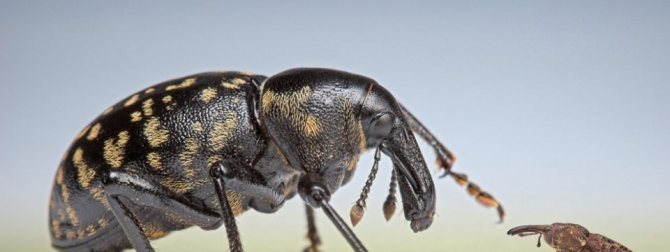

Other popular methods suggest using nails and salt to keep weevils out of the apartment. With these tools, the supply containers become unavailable, and the supplies themselves are not so appetizing. Here are the following two options for how to protect products from colonization by weevils:
- Find steel nails, caps, or wire. Wash items, boil, let dry. Place in containers with cereals.
- Prepare a cloth bag and salt. Soak a bag of flour in a very concentrated salt mixture. When the material is soaked, it must be pulled out and dried.
One of the few chemicals that can be used at home consists of improvised means. This includes kerosene, turpentine, liquid soap, and ammonia. The components must be mixed in equal proportions, then the slots and corners of the shelves must be treated with a solution. Before starting preventive measures, children and pets should be taken out of the apartment for several hours, and then the room should be well ventilated.
The best pest control method is prevention. Here, no special expensive funds are needed, but only a little time and patience. It is easier to prevent the invasion of unwanted freeloaders than to spend energy and budget on cleaning the house. Basic rules for maintaining unacceptable conditions for the existence of weevils:
- Pantries and storage cabinets should be kept clean at all times.
- It is worth carefully choosing containers for bulk stocks.These can be glass or metal cans with sealed lids. Plastic special containers are also well suited. It is better not to use paper and polyethylene bags, they will not keep bugs and food will be spoiled.
- Before use, the containers should be rinsed with water and detergent. Then leave to dry completely.
- To avoid creating the ideal humidity level for insect breeding, you can place a cloth bag of salt on the bottom of the container. Such a measure will help remove excess moisture from the food.
- You need to buy cereals and flour supplies for a maximum of 2-4 months. So, the supplies will be constantly updated and will not stale.
- It is worth carefully monitoring the expiration date. Insects often appear in food items that are out of date.
- Adding garlic, bay leaves, nutmeg on shelves or in containers will prevent bugs from appearing.
It is rather difficult to consider what a weevil looks like, because the size of an adult is 3.5 mm on average. At the initial stage of its development, it is colored light brown, but as it grows, it becomes very dark in color. And it got its name for a special elongated rostrum, which crowns its body, resembling a cylinder in shape. The weevil does not know how to fly, but it moves very quickly with the help of its legs.
A distinctive feature of this species are very powerful jaws, so weevils in an apartment or in a warehouse can easily break the integrity of the packaging material and get to food. For their comfortable existence, they need a temperature from 10 ° C to 25 ° C, humidity within 65%, as well as the moisture content of the products themselves (grain) about 15%.
The female gnaws "minks" in the grains and lays eggs there, from which larvae appear in two weeks. While developing, they eat up the grain from the inside and pupate. The hatched bug gnaws at the wall and turns out to be outside. It is because of this way of development that pests are very difficult to detect at an early stage. Adults are already becoming noticeable.
We suggest that you familiarize yourself: Is a spider an arthropod or not
There are a great many types of these pest beetles, and all of them are not only resistant to various changes in the environment, but also absolutely omnivorous. The main types of home weevils that may end up in our apartments include the following:
- The grain is inhabited by the barn weevil. This small brown beetle has a very good appetite and, multiplying quickly, is able to infect a warehouse with cereals and flour in a very short time;
- Rice weevil is a colleague of the granary. It is a little smaller in size, but it causes widespread harm. The main part of his diet is cereals, corn, peas, pasta, crackers;
- As the name implies, the proboscis nut pest causes the main damage due to the stock of hazel and walnut. Having made a hole in the shell, the female lays eggs, from which larvae emerge and destroy the nuclei;
- The oak variety is also quite large.
You can get rid of weevils in the kitchen, the main thing is to do it as soon as you find these uninvited guests in your products. Use the following tips and the fight against the weevil will be successful:
- If you notice at least one bug, then you need to carefully check everything: cereals, pasta and even tea. Contaminated food must be sent to the garbage disposal immediately;
- Those products that are close to the focus of infection must be secured. To do this, you can influence them with temperature. Low rates are dangerous for all stages of development of this insect, so you can put the packs in the freezer for a couple of days or, if it's frosty outside, onto the balcony. Or you can warm up the cereal in the oven. It will be enough to hold the food there for several hours at 60 ° C;
- After you find the weevil in the cereal and get rid of the affected products, be sure to wipe all the shelves and walls of the cabinet with soapy water, and then thoroughly treat all surfaces with table vinegar diluted with water.
Weevils in the house
These bugs are capable of destroying food supplies.
Features of the reproduction of weevils in the apartment
A few days later, a worm-like legless white larva hatches from the egg, which remains to live in the grain. Its size does not exceed 3-4 mm, and it can only be identified by a brown speck on the head. The larval stage lasts from 20 to 80 days, then the matured young individual enters the pupation phase. The pupa has the same shape as the adult beetle. It is distinguished by its transparent cover and white color.
After pupation and hardening of the cover, the young beetle independently gnaws a hole in the shell of the grain and leaves it.
Types of weevils with photos
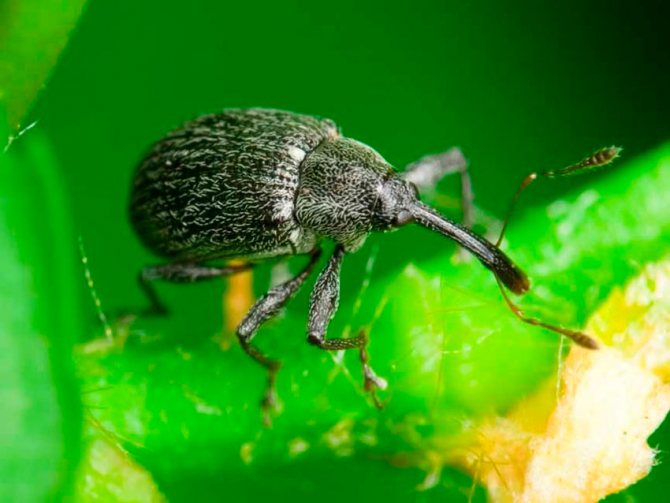

Experts know about more than 5 thousand species of elephant beetles. Insects of this family have one characteristic difference - the presence of an elongated proboscis. At the same time, there are species with both short and long proboscis. Depending on the type of weevil, their larvae also have some differences. For example:
- In weevils with a short proboscis, the larvae are in the ground, where they develop, eating small roots and plant debris.
- The larvae of long-probed elephant beetles develop in plant stems, where they find food for themselves.
Weevil larvae are distinguished by the fact that they have no legs, and the body has a dense, fleshy structure. The body color depends on the type of beetle and can be white, beige, red, brown, etc.
The characteristic features of elephant beetles are:
- Coloring.
- Diet.
- Body shape and size.
As a rule, weevils are nocturnal, and in the daytime they hide in their hiding places. Some types of beetles develop in fruits or young shoots. They make long passages under the bark of trees, which greatly harms the plants.
There are species of weevils that quite often appear on garden plots.
Beetroot
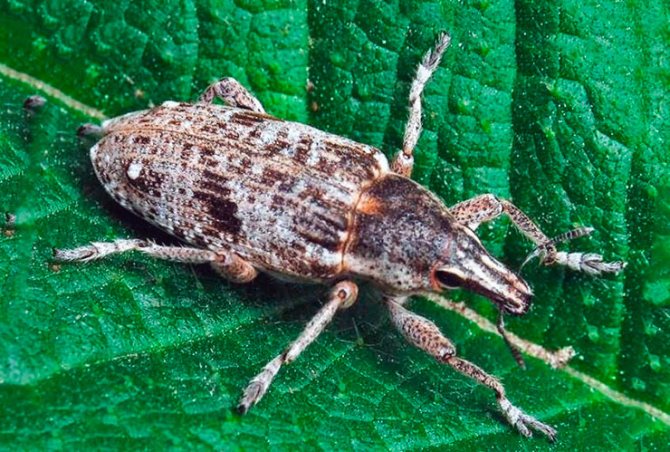

The beetle grows up to 1.5 cm in length and has a black body. In this case, the abdomen is gray, and the back is brown. Fine hairs can be seen all over the body. Begins to show its activity at the first shoots of beets in the garden. However, it can harm young shoots of carrots, cucumbers, cabbage and legumes. The larva is white and prefers to eat the root system. This type of pest is not afraid of large frosts, as it can burrow into the ground to a depth of 0.6 meters.
Southern gray
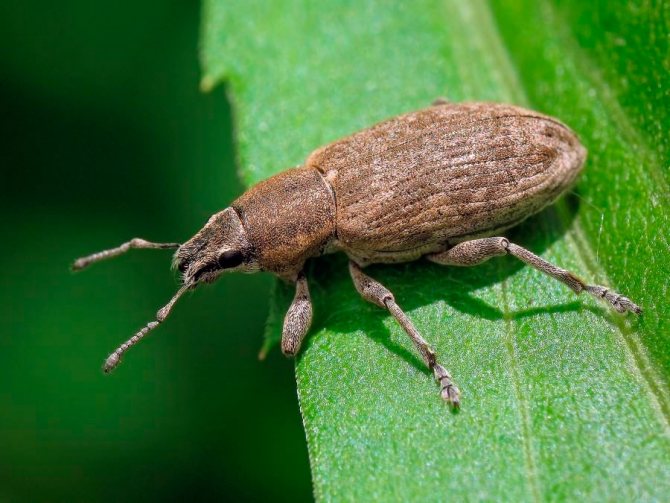

The beetle is distinguished by its small size, only no more than 8 mm, and a dark body color. The beetle is capable of flying long distances in search of food. It is considered an omnivorous pest, as it parasitizes on plantings of winter crops, on sunflowers, on corn, etc. In addition, it can be seen on weeds without any problems.
The beetle hibernates in the ground, at a depth of up to half a meter. With the arrival of spring, the pest appears on the surface and, after 10 days, begins to lay eggs. The female lays them to a depth of 20 cm in the amount of 10 pieces. Already in early August, adult beetles emerge from them.
Rice
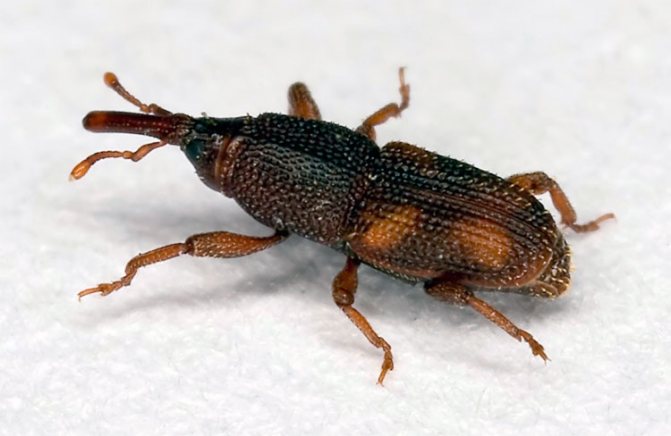

This type of pest is found mainly in the southern regions and is considered the most dangerous parasite for grain crops. The beetle is not afraid of drought and actively eats dry fruits and plants. Under certain conditions, the female can lay eggs up to 8 times a year.
Fruit
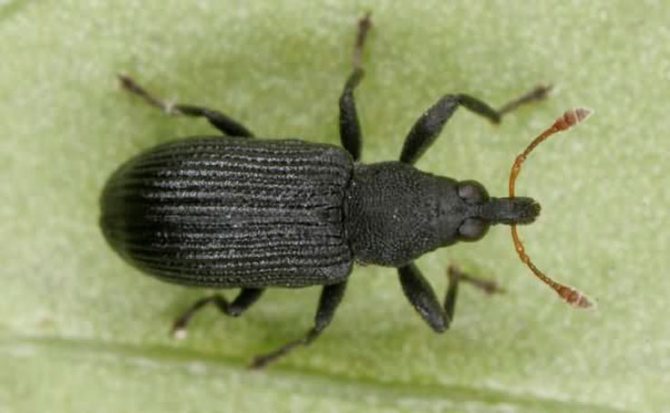

These small pests grow up to 6 mm in length and no more. Mostly fruit trees are affected, starting from the moment when buds appear on the fruit trees.Then they move on to buds and inflorescences, after which they begin to spoil the ovary of the fruit, gnawing holes in them in order to lay eggs.
They parasitize fruit trees such as:
- Cherry.
- Sweet cherry.
- Quince.
- Apple tree.
- Pear.
- Peach.
Raspberry-strawberry
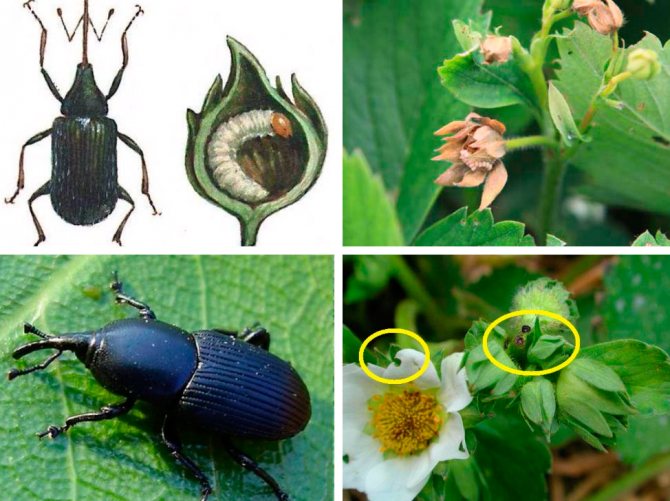

It is a small weevil, only 3mm long. Elongated grooves with gray hairs can be seen on the wings. Beetle larvae are white and have a yellow-brown head. They begin to actively search for food with the appearance of the first greenery. In this case, the beetle can damage:
- Raspberries.
- Strawberries.
- Blackberry.
- Strawberries.
With the appearance of the first buds on the plants, the beetle gnaws a hole in the side to lay eggs. This leads to the fact that up to 90 percent of the strawberry harvest and up to 50 percent of the raspberry harvest are lost. Young beetles appear around mid-summer. They begin to feed on the young leaves of the same plants.
It's important to know! Elephant beetles are considered quite dangerous pests of horticultural crops. They are able to destroy the plant at any stage of development, so you need to immediately take measures to destroy such pests and their larvae.
Varieties of pest bugs
There are a great many types of these pest beetles, and all of them are not only resistant to various changes in the environment, but also absolutely omnivorous. The main types of home weevils that may end up in our apartments include the following:
- The grain is inhabited by the barn weevil. This small brown beetle has a very good appetite and, multiplying quickly, is able to infect a warehouse with cereals and flour in a very short time;
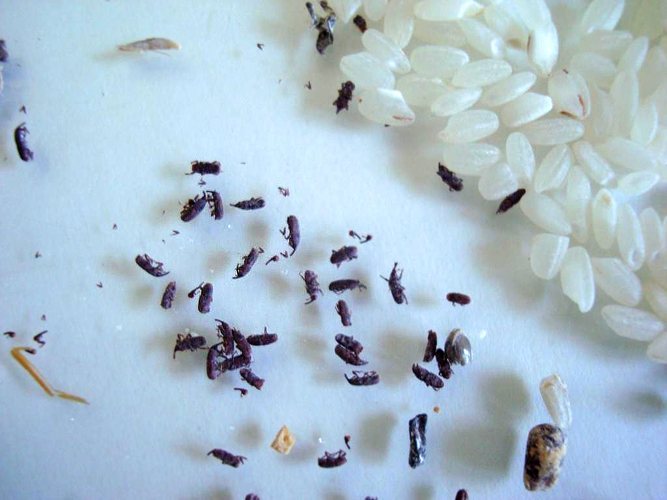

Rice weevil is a colleague of the granary. It is slightly smaller in size, but it causes widespread harm. The main part of his diet is cereals, corn, peas, pasta, crackers;- As the name implies, the proboscis nut pest inflicts the main damage on the stock of hazel and walnut. Having made a hole in the shell, the female lays eggs, from which larvae emerge and destroy the nuclei;
- The oak variety is also quite large.
The varieties and types of weevils are very extensive, and, unfortunately, no one is insured against their appearance in the apartment. Even if your kitchen shines clean, you can bring already contaminated food from the store.
Who to fight with: photos and descriptions of weevils
Weevils are dangerous pests of vegetables and grains. The ancient Egyptians fought with them several millennia ago. These beetles of the order Coleoptera have about 50,000 species. Adult insects reach 2-4 mm, have a dark brown color and a characteristic elongated front part of the head. Beetles have poorly developed wings that they cannot use.
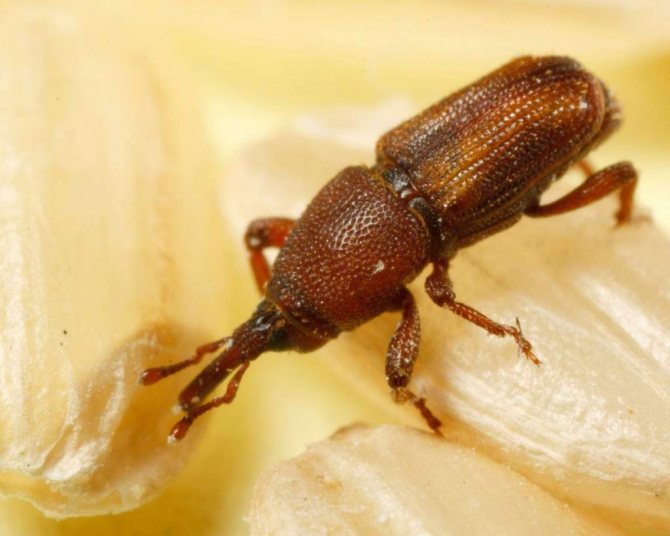

The life span of insects ranges from 7 months to 2 years. A female insect can lay 2-3 clutches per year, each time 200-300 eggs per grain of cereal. Weevils live in the apartment, mainly of the following species:
- the granary is the most insatiable of its kind. Likes to settle in the kitchen and eat supplies of cereals and flour;
- rice - can start in buckwheat or rice cereals, does not disdain bakery products;
- nutty - chooses places for storing nuts for his dwelling;
- Dubovik - loves acorns, but if he settles in houses, he does not refuse those food supplies that he has;
- beet - can live in gardens, vegetable gardens, using vegetables and fruits for food.
On a note!
The female weevil lays only one egg in each grain or grain. This provides the larva with sufficient food until adulthood.
Life cycle
The barn weevil absorbs a lot of feed, it is ready to use a variety of products: rice, beans, wheat, peas, oats, buckwheat and much more.
The greatest harm is caused by the larva of the granary beetle.This light worm does not exceed 4 mm in din. In front it has legs and a head with mandibles.
The female makes a clutch inside the grain, covering the exit hole. The clutch is large enough: laying eggs, one female can spoil about 300 grains. The eggs develop for about 2 weeks, after which the larvae appear. Young growth continues to develop in the same grain, completely gnawing it from the inside. The transformation into a pupa takes place here. The barn weevil leaves the grain only after it becomes a mature adult.
Due to the fact that the development of the beetle takes place inside the grain, it can be very difficult to fight it.
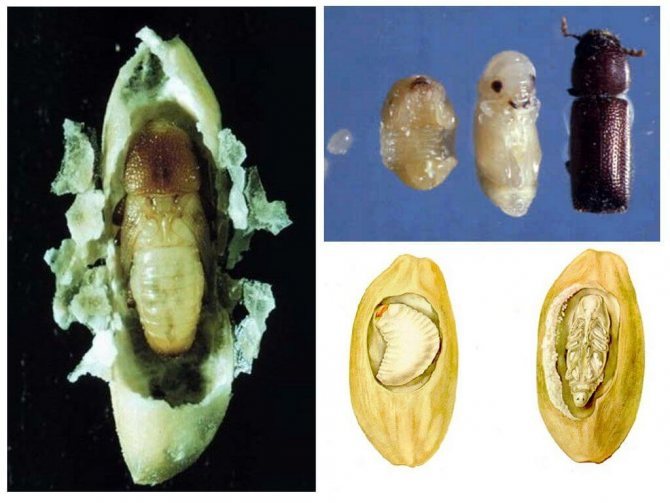

Barn weevil larvae
Interesting!
The rate of development depends on the ambient temperature:
- At 17 degrees, the beetle will emerge from the grain in 80 days;
- At 20 degrees - after 70;
- At 25 - after 34 days;
- At 28 - after 30 days.
Folk methods
Characterized by its small size (about 4 mm), the pest beetle is distinguished by a dark brown, almost black color, a narrow long body and the presence of wings. Such an insect is not adapted to flights, which does not prevent it from successfully moving long distances with the help of a person. The granary weevil travels from continent to continent on ships with industrial grain shipments, on land - by trains and cars. How to get rid of such a dangerous insect?
The process of reproduction of such insects occurs in the warm period: the female in each grain with the help of a thin proboscis gnaws a small hole (two in the corn grain), lays an egg in it, and then covers the gap with a cork from flour. This trick makes damaged grains outwardly almost indistinguishable from whole ones.
The fertility of one individual is 150-300 eggs with a life cycle of 3-4 months; males live a little longer, about 5 months. The duration of development of the larva (about 3 mm long, white, with a brown head) depends on temperature and humidity and is 3-6 weeks. One can only imagine how many thousands of pests can be produced by only one pair of beetles during the year.
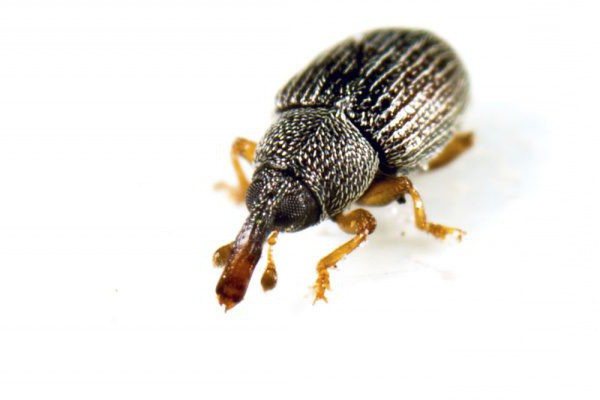

At a temperature of 4 ° C, the larvae stop developing, at -5 ° C they die. Upon completion of development, they turn into almost transparent, 3-5 mm long pupae. After 7 - 22 days, the formed beetles of the new generation gnaw out a passage in the shell and leave the shelter to the outside. The average lifespan of an adult specimen is about 2 years.
Weevil control measures
You can get rid of weevils in the kitchen, the main thing is to do it as soon as you find these uninvited guests in your products. Use the following tips and the fight against the weevil will be successful:
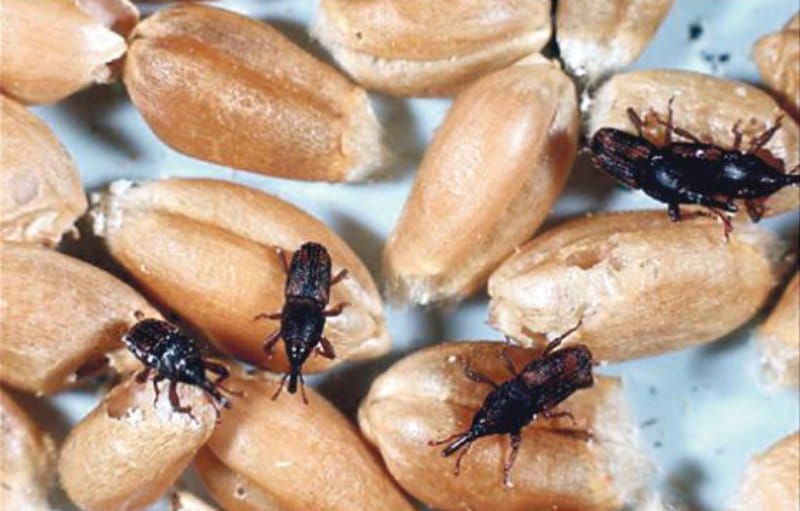

If you notice at least one bug, then you need to carefully check everything: cereals, pasta and even tea. Contaminated food must be sent to the garbage disposal immediately;- Those products that are close to the focus of infection must be secured. To do this, you can influence them with temperature. Low rates are dangerous for all stages of development of this insect, so you can put the packs in the freezer for a couple of days or, if it's frosty outside, onto the balcony. Or you can warm up the cereal in the oven. It will be enough to hold the food there for several hours at 60 ° C;
- After you find the weevil in the cereal and get rid of the affected products, be sure to wipe all the shelves and walls of the cabinet with soapy water, and then thoroughly treat all surfaces with table vinegar diluted with water.
These measures are very simple and straightforward. However, they are an integral part of pest control. After carrying out these activities, you will be able to use both special chemicals and folk advice for the destruction of the weevil.
Control methods
To eliminate the pest in kitchen food supplies, cold or heat treatment is performed. Grain spoiled by a weevil is thrown away; it is not suitable for human consumption. If the weevil is found in a non-residential area, chemicals are used to control the insect. For extensive storage facilities, professional disinsection methods are used: gassing, aerosol and wet processing, fumization.
Chemicals
To eliminate the weevil, insecticides, acaricides, and biological preparations are used. Insecticides are not recommended for use in residential buildings, the substances are dangerous for aquarium fish, bees, and pets.
| Name | Active components | How to breed | Efficiency |
| Inta-Vir | Cypermethrin | 1/8 part of a tablet in 1 liter of water | Substance of contact-intestinal action, the insect dies when the poison enters the digestive tract or comes into contact with it. The death of the weevil occurs in 10-15 hours. |
| Karbofos | Malathion | 90 g for 1 bucket of liquid | When a weevil enters the body, the active component is converted into a poison - maloxone. Nervous action leads to the death of the pest. |
| Fufanon | 10 ml of the drug per 10 l of liquid | After 1-2 hours, the feeding and growth of the weevil stops, the death of the insect occurs after 1-3 days. | |
| Nemabakt, Antonem-F | Entomopathogenic nematodes | For a bucket of water - 1 package | Biological insecticides have a destructive effect, effectively get rid of weevils, and are safe for animals. With a single use of a chemical, a protective period is established for 2-3 weeks. |
| Actellic | Pyrimiphos-methyl | 2 l of liquid - 2 ml of the drug | Protection against the reappearance of pests on grain - 7-14 days. Eggs, pupae and insect larvae die within 2-3 hours. The disadvantage when processing in an apartment is a pungent chemical odor. |
| Karate | Lambda Cyhalothrin | 10 l of water - 2 ml of chemical | The bugs die in 30-60 minutes. Long duration of action, preventive measure of re-emergence of weevils. |
To fight insects, use chemicals only as a last resort; before spraying, you should remove food, dishes, personal belongings. Wear personal protective equipment when handling chemicals.
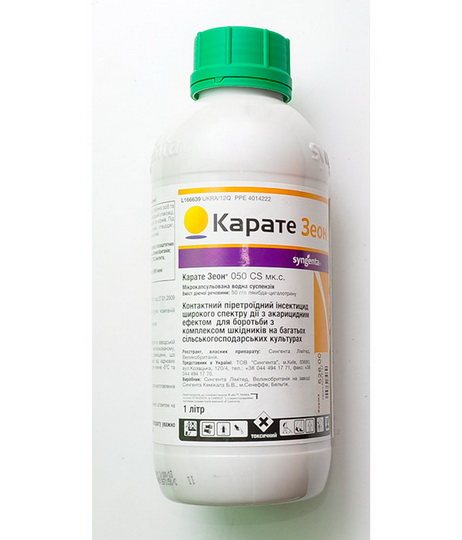

Folk remedies
When you find a weevil in the kitchen, use safe insect control and detection methods that are not harmful to humans and animals:
- A bait will help to determine the presence of a pest at home: powdered sugar, semolina and borax in equal proportions. Process the paper sheets with the prepared mixture and place them on the shelves where grain and other food supplies are stored.
- Cold exposure: put the grain in the freezer for 3-4 hours.
- Heat treatment: sprinkle cereals on a baking sheet, place in the oven for 20 minutes. Set the temperature to 50 ° C on the device.
- Use a microwave oven: pour the grain into a container, run the device at maximum power, residence time - up to 5 minutes.
- If a weevil beetle was found in a storage container, the grain should be discarded and the jar should be processed in boiled water. Pour fresh groats after disinfection and drying of the product. To prevent the reappearance of the insect, a clean nail is placed in the container.
- Use cloth bags soaked in saline to store flour. To determine the optimal concentration, place a raw egg in the liquid: the product should float on the surface. Submerge the bag in the solution, wait until the fabric is completely saturated, air dry before use.
- The use of chemicals to remove weevils: kerosene, turpentine, ammonia.
Cleanliness is a reliable protector against pests
Before pouring grain into storage, it must be thoroughly cleaned of debris.A small amount of the crop is carefully examined, removing the elements of weed grass and large husks. Large volumes of grain are cleaned mechanically. Thanks to such processing, the chance to protect the product from the beetle invasion increases.
An important measure to combat barn weevils is moisture control and grain storage ventilation. It should always be dry and have enough fresh air. If necessary, the room is treated with chemicals.
The following options are available for sale:
Most often, hydrogen phosphide is used, which is sprayed throughout the storage area. For small rooms, the drug is used in liquid form.
To protect the crop from annoying pests, scientists have created a special drug. Practice has shown that weevil tablets in grain are an effective means of fighting the pest. However, before using them, you must carefully read the instructions for use.
If the grain is poured into the hopper, tablets are added as it moves quickly and rather abruptly. To protect the product stored in the bags, the product is placed around the bags in small portions.
Extermination of fruit pests
It is no less difficult to destroy insects in summer cottages and in the garden than to kill a weevil in grain harvested for storage. Processing is planned in late spring, during flowering periods. Pay attention not only to trees, but also to currant bushes, gooseberries, strawberries, berries, grapes. Timely spraying with special preparations gives a positive effect. The procedure is repeated 2-3 times to completely remove the pest.
Post Views: 66
Weevil chemicals
If you are wondering how to deal with a weevil, you need to take into account that any drugs that you are going to use must be absolutely safe for humans. This is due to the fact that insects live directly in food. Placing any traps or simply placing drugs on shelves is ineffective.
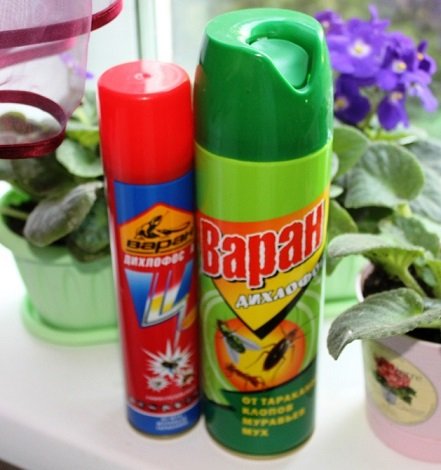

But the omnivorous weevil can also infect indoor plants. These pests gnaw holes in the buds and lay eggs there. As a result of such destructive activity, the plant weakens and begins to hurt. And insects, having multiplied, can reach your kitchen.
In order to prevent the spread of the weevil in the apartment, we first get rid of the damaged parts of the plant, and then we process the soil and leaves with solutions of such agents as Inta-Virom or Fufanon.
Harm to strawberries
Early, warm spring is very favorable for these insects. Old, thickened berry plantations are another risk factor.
Both weevil larvae and adults do significant harm to strawberry plantings. Especially badly on the yield is the laying of eggs by the weevil in the buds of early varieties of garden strawberries, as a result of falling off the color, the berries do not have time to tie on them. Nibbling of leaves by adult beetles disrupts the processes of photosynthesis, the affected strawberry receives less nutrients, and fruiting worsens.
If weevils have settled in the garden, the strawberry yield can be reduced by 70%.
Interesting! Weevils prefer to lay eggs in male flowers, since there, unlike female flowers, there are stamens - which are the main food for the larvae of the pest.
Advantages and disadvantages
The weevil is a creature extremely adapted to the changing conditions of the external environment. It feels comfortable in a temperature range of 16 to 28 degrees, but can withstand more extreme temperatures. It is also not picky about the humidity of the environment, since it spends most of its life inside the grain under the protection of its dense shell - exine. However, too dry air is destructive for most insects, including the weevil.
The duration of the beetle's life cycle depends on external conditions: the softer they are, the faster the insect reaches sexual maturity. If the temperature regime does not suit him, then the pest is able to fall into suspended animation, in order to then return to a full life. Thus, the pest is capable of producing 2-3 generations per year. Both beetles and larvae hibernate inside the grains. Also, adult insects feel good in crevices, cracks and other secluded places.
Together with the damaged grain, as well as with the equipment, weevils wander from one storehouse to another, affecting agricultural products.
How to get rid of a weevil with folk remedies
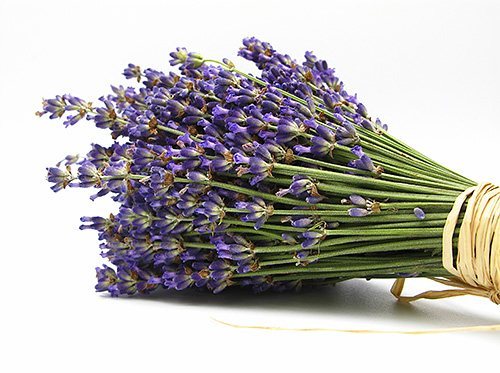

You can also learn how to get rid of weevils from the people's councils. Most of them advise to lay out on the shelves such plants as lavender, tansy, lavrushka, wormwood, which have a strong smell. Cloves, mint will do.
It is good if you have an extract of, for example, lavender. Then you can soak a cotton pad in it and leave it on the shelf. Citrus peel, mint, eucalyptus and even washing powder have a deterrent effect. Unpeeled garlic cloves can be placed directly into the container.
You can scare away insects and remove weevils by treating possible places from the appearance with a mixture of kerosene, ammonia, liquid soap and turpentine, taken in equal proportions.
General conditions for the prevention and control of pests of cereals
- How to get rid of flour bugs? To begin with, you should review all stocks of cereals, pasta, flour,
The massive spread of bugs in a granary can destroy up to 50% of stored grain in a week.crackers, coffee, tea and spices. All contaminated foods must be collected in a bag, tied tightly and discarded.
- Weevils are very fond of warmth, so if you store your cereals, from which you do not cook often, in the refrigerator or a cool place, then small bugs will not appear in the kitchen.
- Also, in order to prevent the appearance of weevils, cereals (especially if you buy them in large quantities or by weight) are heated. According to the researchers, weevils can be destroyed in a day or two by raising the storage temperature to 40 degrees, and if you raise it to 50 degrees, the weevils will die in 6-8 hours.
- Store cereals, spices and flour in glass or plastic jars with a sealed lid, it will be difficult for bugs to start in such a dish, so there will be no need to get rid of them.
- If weevils are still in the jar, then before filling in the new cereal, be sure to thoroughly wash it with detergent and rinse it with vinegar solution.
- In the fight against weevils, however, as from other midges that settle from time to time in closets, dried lavender or bay leaves are suitable, which scare away bugs.
We suggest you familiarize yourself with: Flies in the house what to do
In order to prevent their appearance, you need:
- Use sealed glass and plastic containers for storage;
- Do not make excessive stocks of cereals, nuts, etc.;
- Monitor the humidity in the room;
- Wipe surfaces regularly with a solution of soap and vinegar.
Weevils in the house
How to deal with a weevil in the kitchen depends on the degree of infection. The destruction of insects will require a number of measures:
- Thorough scrupulous inspection of food. Some types of weevils can even start in tea, so no product should be left unattended.
- The provisions in which insects have been found should be disposed of. Wash containers and containers in which beetles were found using disinfectants.
- Treat kitchen cabinets with a vinegar solution. Before processing, carry out a wet cleaning in the cabinets in order to remove possible waste products of the beetles.
- To get rid of weevils at the initial stage of infection, grain, cereals should be placed in a refrigerator or oven.
Folk remedies are represented by plants with repelling odors: lavender, bay leaves, garlic. Leaves of grass are laid out in places where grains, cereals are stored, and cloves of garlic are placed directly in a storage container. The most radical folk remedy for weevils that can kill adults is a mixture of turpentine, liquid soap, ammonia and kerosene. Mix all components in equal proportions and treat potential habitats with the resulting mixture.
The fight against weevils will be more fruitful if basic storage conditions are observed: pre-treatment with cold or heating of the grains, followed by placement in a container equipped with a sealed lid.
Harmfulness
The barn weevil is one of the most dangerous and widespread grain pests.
An adult beetle (imago), when feeding, damages various grain and its processed products. Larvae can develop in wheat, rye, barley, oats, rice, corn, buckwheat, millet, sometimes in pasta and caked flour.
Grains damaged by a weevil become easily accessible to other secondary species of stock pests - insects and mites. The grain damaged by it, in the case of a large amount of weevil, is unfit for food and causes indigestion. [6] Severely infected grain becomes hygroscopic and undergoes further self-heating and rotting. [1]
Weevil beetle extermination
These insects belong to the family of beetles and have a characteristic external feature - the front of the head is strongly elongated, which makes it look like an oblong tube.
The weevil is especially widespread in areas with a tropical climate. At the same time, the number of species in Russia reaches 5 thousand. Many of these species pose a threat to horticultural and horticultural crops.
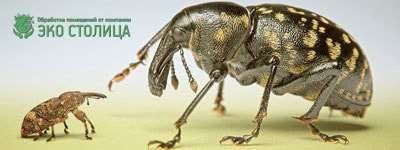

Indoor plant protection
Speaking of the omnivorous pest, the harm caused to indoor plants is also meant. In the early phase of flowering, elephants gnaw a hole in a flower bud to lay an egg inside it, and only then weaken the pedicel. Diseases of domestic plants are provoked by parasitic insects, when in the summer flowerpots and pots are taken out to the terrace, balcony or garden.
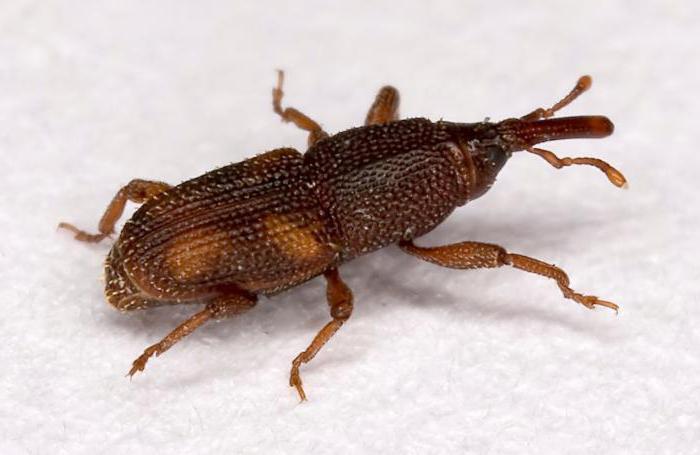

The weevil is very gluttonous
Attention! The gluttony of the weevil is evidenced by at least the fact that a sexually mature insect eats about 14 g of green shoots, petals, and buds to maintain vitality. This amount is 100 times more than the weevil's own weight.
Most often, the fight against weevils is carried out on roses, cyclamens, hydrangeas by watering the soil in pots with Inta-Vir, Fufan. Pre-infected flowers are removed from healthy crops. The leaves are wiped with the same solutions prepared according to the instructions.
From non-chemical methods, it is recommended to prepare a mustard solution for spraying: dilute 100 g of mustard powder in a three-liter can of water. If possible, however, it is best to transplant the plants into a clean pot with non-contaminated soil.
Compliance with preventive measures, proven control methods will help in protecting the home from weevils.
Check out articles on similar topics
- How to get rid of two-tails in a private house
- Earwig and how dangerous it is for humans
- How to remove wood lice in the bathroom and toilet
- How to get rid of a grinder beetle and its larva
Comments (1)
leave a comment
Prophylaxis
The complex of preventive measures includes spraying strawberry bushes with the onset of spring and until autumn with any solutions from folk recipes, regular weeding and loosening of the beds, removing dried leaves and debris, placing new beds with strawberries at a distance of more than 500 m.from old ones (realizable rather on farm plots). If the story with the weevil repeats itself from year to year, it makes sense to attract natural enemies of the pest to the garden - birds, ants, wasps. Strawberry seedlings purchased from an unknown manufacturer must be washed with a manganese solution before planting.
In mid-August, pupated beetles prepare for hibernation and are as vulnerable as possible. With the help of simple agricultural techniques, you can prevent the appearance of beetles in strawberry beds in the next season:
- cut off old leaves on strawberries, leave only the middle of the outlet;
- remove weeds in the aisles;
- spray the garden with any insecticide;
- after 7 days, thoroughly loosen the soil and repeat the treatment.
The chemical preparation can be replaced with a solution of mustard powder. Dilute 200 g of mustard in 8 liters. water, add 50 g of liquid soap for adhesion.
For the winter, strawberries can be densely mulched with coniferous needles. As a rule, pests avoid such areas. Dusting with wood ash gives a good effect. If the beetle does not crawl from the neighbors, it will not be on the strawberry garden next year after such treatments.
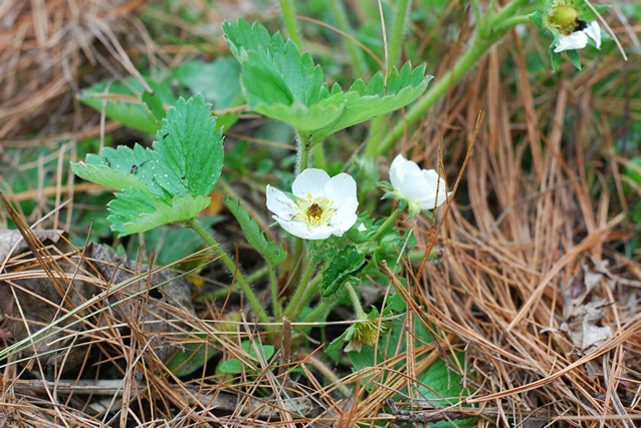

The weevil is discovered too late, when it has already done its dirty deed. The damage they do is irreparable. Therefore, there is no need to wait for the consequences of its vital activity, but to take preventive measures and process the bushes before flowering.
What is the danger of elephants
Rice elephant
In addition to the fact that they spoil food, turning them into dust, they can cause allergic reactions, accompany the disease with allergic alveolitis. Leaving microparticles of its chitinous membrane in the flour, carcinogenic secretions that turn into the finished product after baking, contribute to the occurrence of infections and malfunctions in the gastrointestinal tract. Pathogenic fungi and bacteria are introduced into products. In doing so, they travel from one cereal to another or into flour.
Characteristics of the weevil beetle
The weevil beetle has a body about 3 millimeters long. It is painted in a gray-black shade. The parasite has a clear preference for berry crops. So for the strawberry, raspberry and strawberry gardener, getting rid of the pest is the number one task. Otherwise, you can forget about a good harvest. The miniature size does not prevent the pest from reducing yields by up to 40%!
Interestingly, the weevil beetle has no love for ripe fruits.... They may not appear at all, since it is the buds of berry crops that are attractive to the insect: there the females lay their eggs. When the larvae hatch from the eggs, they eat the flower from the inside, which leads to the death of the bud.
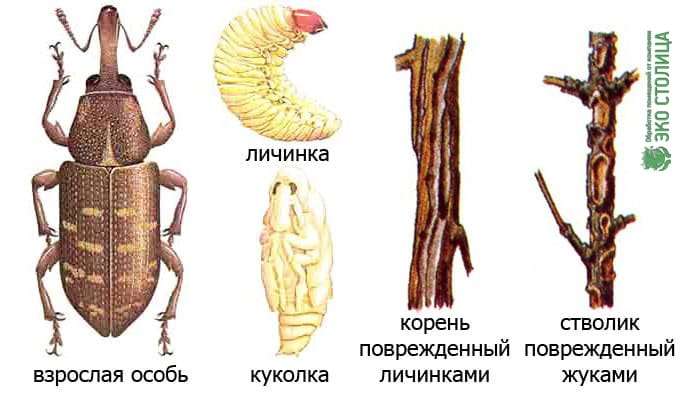

Signs of damage to bushes and harmfulness
If the gardener is wary of using chemicals, there are effective folk methods that become assistants in the fight against beetles. The most effective method is manual wrestling. Spread a piece of newspaper or paper around each berry bush, and then, after a few hours, they simply shake off the insects on such a specific bedding.
Dry mustard powder is a good control method. It is bred with water and sprayed with berry bushes. Effective methods are various spicy plants that are used for infusions, for example, tansy, wormwood. An effective option is to spray the bushes with diluted potassium permanganate. When processed with ammonia, strawberries bear fruit well and develop without pests. A spray composition is also prepared, consisting of:
- garlic;
- needles;
- boric acid.
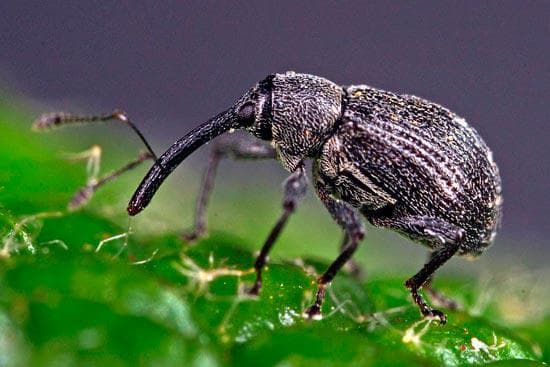

All ingredients are thoroughly mixed and infused for 7 days. After that, berry bushes, leaves and inflorescences are processed.
To prevent further damage by weevils, preventive measures should be taken regularly, which consist in regular weeding of bushes, removal of old leaves when fruiting ends and, of course, spray the plants in time at the first signs of a pest.
Raspberry-strawberry weevil is a beetle, from dark gray to black flowers, 2-3 mm long, is active during the spring growing season, during the growth of young leaves and strawberry flowering, eats the peduncle and lays the larvae in the buds, which devour them.Hibernates in soil at a depth of 2 cm.
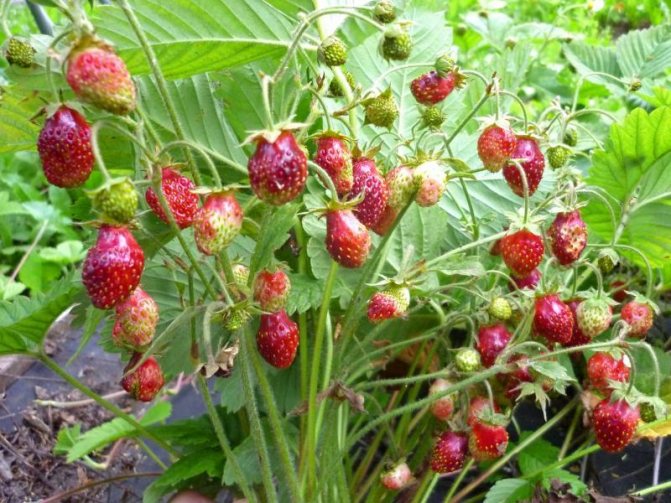

Strawberry
The harmfulness is:
- when the larvae eat up the stalks, as a result, the buds break;
- very small holes appear on the leaves - a sign of a weevil invasion.
The nettle-leaf weevil is a bright green beetle with the greatest activity in cloudy weather, feeds on leaf plates, and also lays larvae in buds.
Since weevils are very small in size, in the spring it is necessary to constantly inspect strawberries for holes, as if the leaves were pierced with a needle.
Weevil females can lay up to 50 eggs in strawberry buds during the flowering season, since they fertilize one egg per bud every day. A larva emerges from the egg and actively feeds on the juice of the bud for 20 days, after which it pupates, and a new weevil is born a week later.
It's important to know! If you do not start an active fight against the weevil during the flowering of strawberries, the harvest can be lost by 50%.
Garden strawberries are susceptible to attack not only by the weevil, but also by other insect pests that can partially or completely destroy the crop. In order to avoid loss of yield, it is necessary to have knowledge of all the signs of damage to strawberry plantings by pests. The most common types of strawberry pests are presented in the table below, with a description of the damage done.
Types of insect pests and their harm
| Pest | Insect description | The harm done |
| Strawberry whitefly | Microscopic white butterfly, its length is 1.4 mm, width is 0.3 mm; does not like sunlight, therefore it lives on the inner side of the leaf | It sucks out leaf juice, light white specks form on the leaves, which interfere with photosynthesis. |
| Shaggy bronze | Black beetle, body length 1.2 cm; causes the greatest harm between May and June | Eats flowers and young leaves. |
| Strawberry nematode | The round worm, its length is only 1 mm, has a body in the form of an elongated cylinder; settles in the axils of the leaves and in the buds. | It causes deformation of the buds during flowering, there is a decrease in the ovaries, they curl, the result is a halt in the growth of the bush. |
| Chafer | Black beetle with brown elytra, up to 25 mm long; becomes active at the end of April; yellowish-white larvae, up to 6 cm in length, eat the root system of the plant. | Partial or complete consumption of leaves is observed. If the bush becomes weak with noticeable wilting, this is a sign of the presence of larvae eating up the roots. |
| Medvedka ordinary | Large (up to 6 cm) and unpleasant-looking brown cockroach pest; loves moist soils with organic fertilizers; eats the root system of strawberries. | Complete wilting of the strawberry bush due to a damaged root system. |
| Strawberry mite | Transparent from white-yellowish to brown colors; female size - 0.2 mm, male less - 0.1 mm, cannot be seen without a microscope; the greatest activity from mid-July, as he loves warmth. Sucks juice from leaves; | An invasion is recognized by the following signs: a stop in the growth of a bush is a sign of dwarfism; leaves are twisted and wrinkled, wax-yellowish, with further withering away. |
| Slugs | They reproduce actively during the period when spring temperatures rise from 15-18 ° C at high humidity. | In the center of the leaves there are huge gouged holes and berries eaten from below. |
| Cruciferous flea | Small black beetle, has a convex back and powerful hind limbs, a maximum length of 3 mm; the color has a blue metallic sheen or dullness; knows how to jump and fly, therefore it easily spreads to neighboring areas; the greatest activity in early spring at a temperature of 15оС; eats young strawberry leaves. | Numerous holes in the leaves, which leads to the weakening of plants and the death of bushes. |
| Horsefly bug | Greenish-gray beetle, 6 mm long, with short antennae, on the back has a lighter spot in the shape of the letter V; lays eggs in strawberry flowers; larvae are pale green with dots on the back, eat berries. | Small dots appear on the leaves, in the place of which there will subsequently be holes, then the leaves will curl and rot. Deformation of berries occurs due to tissue disorders. |
We suggest you familiarize yourself with: Mosquito and mosquito difference
The bug is called a weevil for a reason - its proboscis is very long, although the insect itself barely reaches a size of 3 mm. But his activities on the plantation can completely negate all the efforts of the gardener - the bushes will weaken, the flower shoots will fall off, and the leaves will shrink and dry out, which can ultimately lead to the complete death of the entire plantation. It will also be interesting and useful to learn about how strawberries are pruned after harvest.
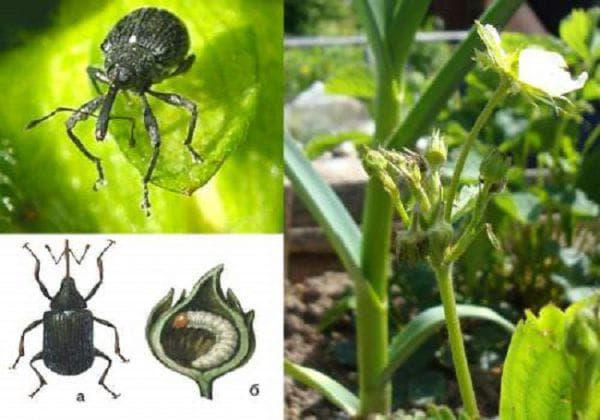

Weevil on strawberries
A pest appears with the first warm days, when the temperature barely reaches 10 degrees, and immediately begins to do its dirty work - with its long proboscis, it bites into the core of the bush, strikes the heart, leaves and future flower buds. Such bushes can be identified by a poorly developed leaf rosette, the leaves are all with small holes.
You may also find it useful to learn about how Dutch strawberry cultivation is carried out.
For full development, the larvae need only 20 days, and then this adult harmful insect will again lay eggs, from which new pests will grow. Small insects develop and mature inside the flower bud, it serves them both as food and shelter.
Prevention against barn weevil
It is important to observe preventive measures:
- before falling asleep in the bunkers, the grain must be cleaned of weed and grain impurities;
- store grain separately from different harvest periods and different moisture content;
- thoroughly clean containers from last year's grain and debris stocks;
- monitor the moisture content of the grain (not less than 14%); in the case of long-term storage, this indicator is recommended to be reduced by 2-4%, which increases the grain resistance to damage by weevils and limits the vital activity of this pest;
- destroy contaminated stocks.
In case of severe infection, it will be necessary to fumigate grain and storage facilities with drugs intended for this.
As a preventive method, it is imperative to maintain cleanliness and order in warehouses, treat them chemically (by gas disinfestation, aerosol and wet disinfection of warehouses), whitewash before filling the grain.
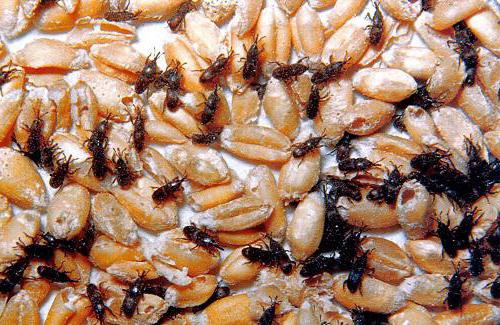

Checking grain for infestation with barn weevils should be done every 2 weeks in the summer and once a month in the winter. Contamination analysis is carried out in accordance with regulatory methods and standards.

